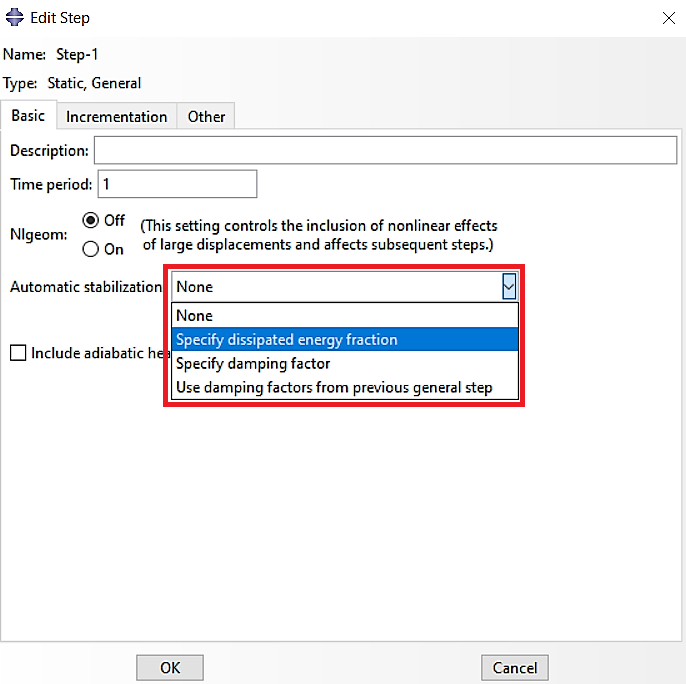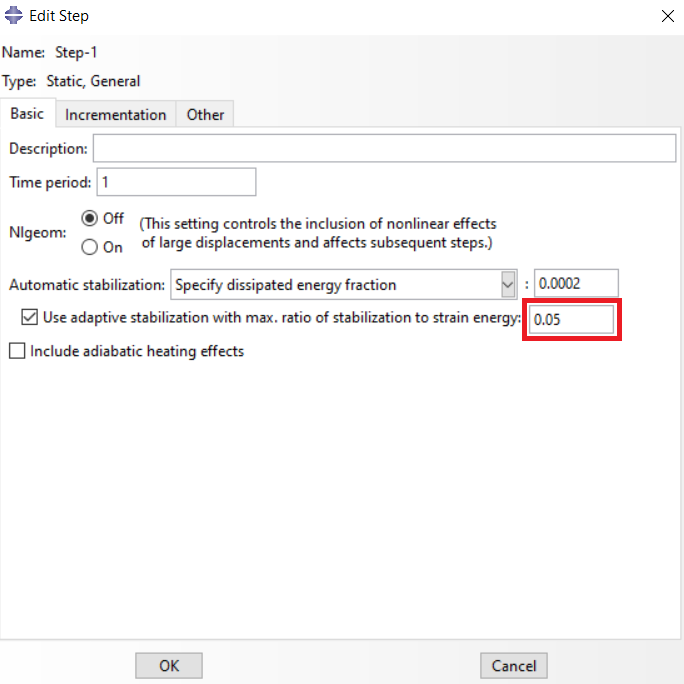What is the Automated stabilization used for in the ABAQUS standard? Can we use it in unstable problems? How can I stabilize an unstable quasi-static analysis? How can I stabilize a problem in ABAQUS/Standard?
- Training Group asked 2 years ago
- last edited 6 months ago
- You must login to post comments
What is automatic stabilization in Abaqus? | Automatic stabilization Abaqus
The automatic stabilization option in a static general step in Abaqus is a feature that can be used to stabilize unstable quasi-static problems. Abaqus/Standard uses an adaptive automatic damping algorithm to add volume-proportional damping to the model. The damping factors can be constant over the duration of the step, or they can vary with time to account for changes over the course of a step. The latter, adaptive approach is typically preferred.
Abaqus automatic stabilization is useful for a variety of problems, such as:
- Contact problems with large amounts of friction
- Post-buckling problems
- Problems with large deformations
- Problems with material softening
- Problems with multiple load steps that involve significant changes in the stiffness of the model
Automatic stabilization is not turned on by default. To activate it, the user must explicitly specify the STABILIZE parameter in the *STATIC step definition. The user can also specify the damping factor directly or allow Abaqus to calculate it based on a dissipated energy fraction.
Here are some tips for using automatic stabilization:
- Use the adaptive approach whenever possible.
- Start with a small damping factor and increase it gradually as needed.
- Monitor the stabilization energy (ALLSD) and the total energy (ALLSE) of the model. The stabilization energy should be kept to less than 5% of the total energy.
- Be aware that too much stabilization can cause non-physical behavior or even non-convergence.
Automated stabilization can be used for locally unstable problems. This option will automatically damp your system with three different methods (see Figure 1) to solve convergency issues and make your system stable. It’s like the Maximum displacement option in the RIKS method. Just remember, when you use this option, you have to monitor the damping energy to avoid incorrect results. You must compare the viscous damping dissipated energy (ALLSD) with total strain energy (ALLIE) and ensure they won’t differ more than 2 or 5 percent. See Figure 2; you could specify the mentioned percentages in part shown in the Figure.

Figure 1 three different methods for Automatic stabilization

Figure 2: specify the maximum difference between ALLSD and ALLIE
- Training Group answered 2 years ago
- last edited 6 months ago
- You must login to post comments
Please login first to submit.
